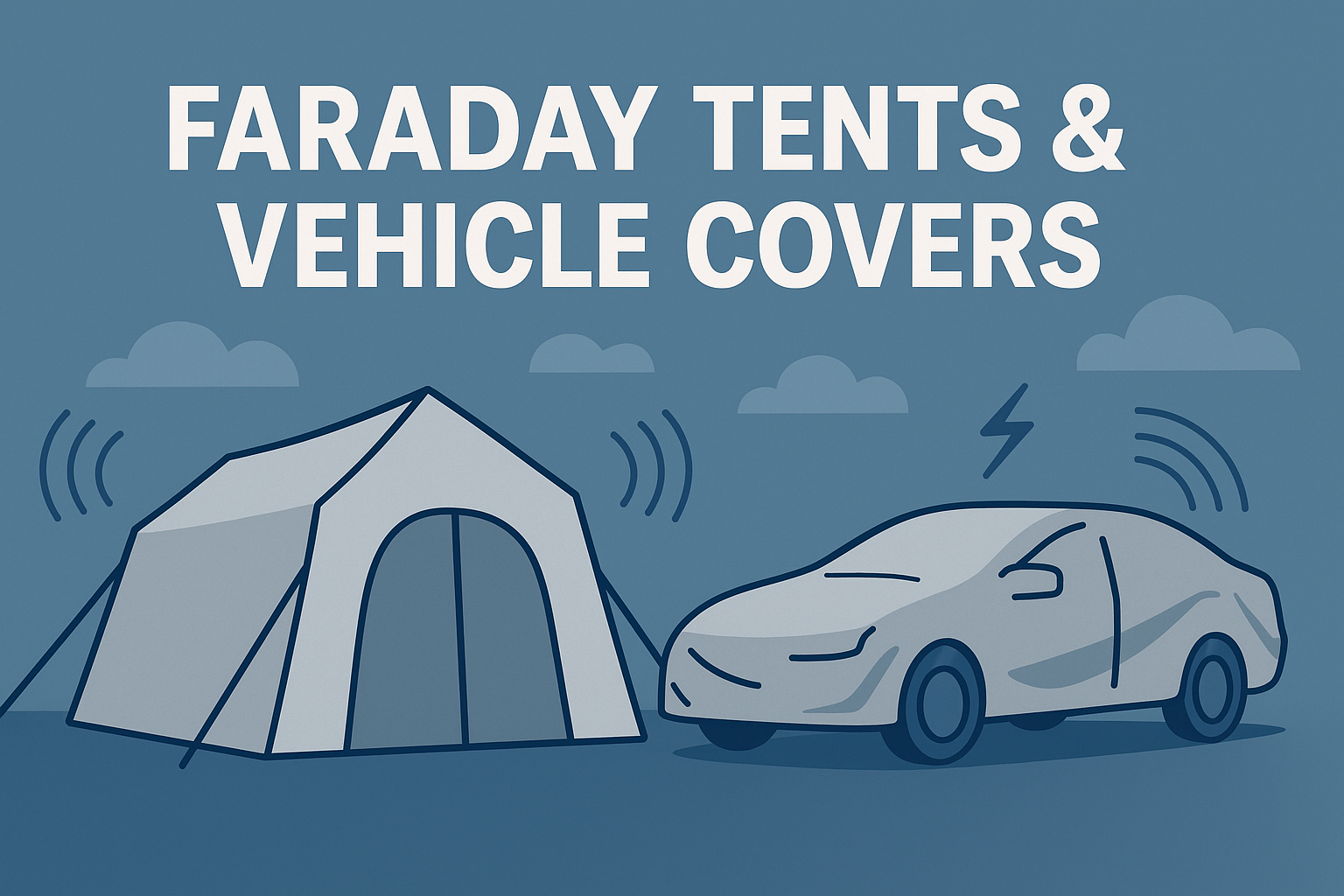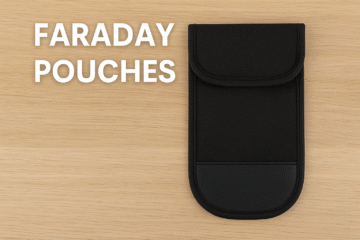Sealing and Connecting Your EMF Protection System
When building an effective EMF or RF shielding setup, small gaps and unsealed seams can drastically reduce performance. Even a single unconnected joint can allow electromagnetic fields to leak into an otherwise protected space. That’s where RF shielding tape comes in—a specialized conductive adhesive tape that ensures electrical continuity across seams, joints, and overlaps in your shielding materials.
Whether you’re working with RF shielding paint, foil, fabrics, or films, this tape is the final step that completes the barrier—literally sealing the system for maximum attenuation.
What Is RF Shielding Tape?
RF shielding tape (also known as EMI/RFI conductive tape) is a flexible, electrically conductive adhesive tape used to connect, seal, and reinforce EMF shielding materials. It’s made from a conductive metal foil—typically copper, aluminum, or nickel-plated fabric—backed with an electrically conductive adhesive that ensures continuous conductivity through the bond line.
These tapes are essential for:
- Joining seams and edges of foil or fabric barriers.
- Grounding conductive surfaces to a common electrical path.
- Patching or repairing small tears in shielding systems.
- Enhancing attenuation in weak areas like corners and junctions.
How It Works
RF shielding tape functions by preserving electrical continuity across connected surfaces. For a Faraday cage, canopy, or foil-lined wall to be effective, every piece of conductive material must be interconnected—no breaks in conductivity.
When applied correctly:
- The metallic surface of the tape overlaps adjacent shielding material.
- The conductive adhesive layer forms an electrical bond between the two surfaces.
- The resulting joint allows electric currents (and EM fields) to flow smoothly, preventing “leakage” or high-impedance gaps.
Because electromagnetic waves can penetrate even narrow openings, properly taping seams is often the single most important finishing step in any RF shielding project.
Common Tape Materials and Their Properties
| Material Type | Conductive Base | Key Features | Typical Attenuation |
|---|---|---|---|
| Copper Foil Tape | Pure copper or tin-plated copper | Highly conductive, excellent corrosion resistance | 60–80 dB |
| Aluminum Foil Tape | Aluminum | Cost-effective, lightweight | 40–60 dB |
| Nickel-Plated Fabric Tape | Polyester mesh coated with nickel or copper | Flexible, non-oxidizing, ideal for fabrics | 50–70 dB |
| Carbon-Infused Tape | Carbon fiber composite | Lightweight, non-metallic, moderate shielding | 30–50 dB |
Copper-based products tend to offer the best conductivity and attenuation, making them preferred for high-performance installations like SCIFs (Sensitive Compartmented Information Facilities) or industrial EMF control.
Applications of RF Shielding Tape
1. Seam Sealing for Foil and Paint
Used to overlap and seal joints in RF shielding foil or connect sections of RF shielding paint to create continuous grounding paths.
2. Conductive Grounding Connections
Connects walls, floors, or ceilings to a grounding plate or ground wire, ensuring static discharge and field control.
3. Repairs and Patchwork
Quickly restores conductivity in torn, punctured, or cut shielding materials.
4. Fabric and Canopy Edge Reinforcement
Applied to reinforce seams of Faraday fabrics and canopies for long-term durability and conductivity.
5. Laboratory and Industrial Uses
In electronics manufacturing, used to shield components, cables, and enclosures from electromagnetic interference (EMI).
Benefits of RF Shielding Tape
- Completes the Shield: Ensures full continuity in Faraday barriers and prevents EMF leaks.
- Highly Conductive: Maintains measurable electrical connection between joined materials.
- Easy Application: Simple peel-and-stick installation on metal, plastic, glass, or textile surfaces.
- Durable & Flexible: Adapts to corners, bends, and irregular surfaces.
- Corrosion Resistant: Many varieties are tin- or nickel-plated to resist oxidation.
- Multi-Frequency Performance: Effective against both low-frequency (ELF/VLF) and high-frequency (RF/5G) fields.
Technical Considerations for Installation
Surface Preparation
- Ensure surfaces are clean, dry, and free from oil or dust.
- For painted or fabric surfaces, test adhesion on a small area first.
Overlap and Compression
- Apply with firm, even pressure to remove air bubbles.
- Overlap seams by at least 1 inch (25 mm) to guarantee continuity.
Grounding Integration
- If used to connect to ground, ensure firm contact with a grounding plate or screw terminal.
- Some tapes can be soldered to copper braid or wire for stronger electrical bonds.
Compatibility
- Choose a tape material compatible with your base shielding material (e.g., copper tape for copper foil, aluminum tape for aluminum paint).
- Avoid mixing dissimilar metals when moisture may be present—galvanic corrosion can occur.
Comparison: Leading RF Shielding Tape Products
| Brand / Product | Base Material | Adhesive Type | Width Options | Shielding Range | Approx. Price (per roll) |
|---|---|---|---|---|---|
| 3M 1181 | Copper foil | Conductive acrylic | 0.5″–2″ | 60–80 dB | $25–$60 |
| 3M 1245 | Aluminum foil | Conductive adhesive | 0.5″–2″ | 40–60 dB | $20–$45 |
| LessEMF Shield Tape 3201 | Nickel/copper fabric | Conductive adhesive | 1″–2″ | 50–70 dB | $15–$35 |
| YShield GSX Conductive Tape | Graphite/carbon hybrid | Conductive adhesive | 1″ | 40–55 dB | $10–$25 |
| Safe Living Technologies Copper Tape | Tin-plated copper | Conductive adhesive | 1″–4″ | 65–85 dB | $30–$70 |
Each of these products is rated for both industrial EMI suppression and residential EMF mitigation use. 3M’s 1181 and LessEMF’s Shield Tape are often cited by installers for consistent conductivity and adhesion.
Testing and Verification
To ensure proper performance:
- Use a continuity tester or multimeter to confirm conductivity between seams.
- After installation, use an RF meter to verify signal attenuation across joints.
- For high-performance setups (such as SCIFs or secure data rooms), request a certified attenuation test from the installer or manufacturer.
Maintenance and Longevity
- Lifespan: 5–10 years or longer, depending on environment.
- Environmental Resistance: Most conductive adhesives are pressure-sensitive acrylics that resist temperature changes and humidity.
- Replacement: Inspect annually for oxidation, peeling, or adhesive degradation—especially in high-moisture areas.
- Storage: Keep rolls in a cool, dry place, ideally below 80 °F.
Practical Use Example: Completing a Shielded Room
In a home or office shielding project:
- RF shielding paint is applied to walls and grounded.
- RF foil is installed on adjoining surfaces.
- RF shielding tape seals the seam between foil and paint layers, ensuring both electrical and RF continuity.
- Grounding tape then connects to a grounded outlet or external earth rod.
The result: a fully enclosed Faraday environment that blocks both RF and electric fields effectively.
Key Takeaways
- RF shielding tape is essential for creating complete, continuous EMF barriers—bridging seams and ensuring conductivity across all materials.
- Made from copper, aluminum, or nickel-plated fabric, it provides up to 80 dB attenuation when installed correctly.
- The tape’s conductive adhesive makes it easy to integrate with paints, foils, and fabrics.
- For reliable results, ensure clean surfaces, overlap coverage, and grounding.
- It’s a small but crucial component in building a professional-grade EMF shielding system.
References
Electronics Notes – RF Shielding Principles
3M EMI/RFI Shielding Tapes Datasheet

